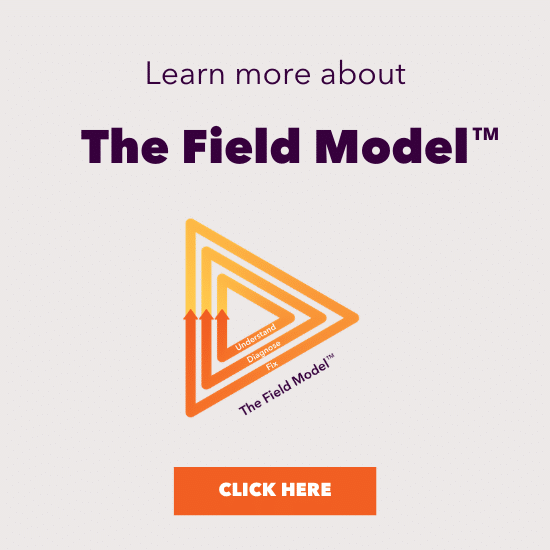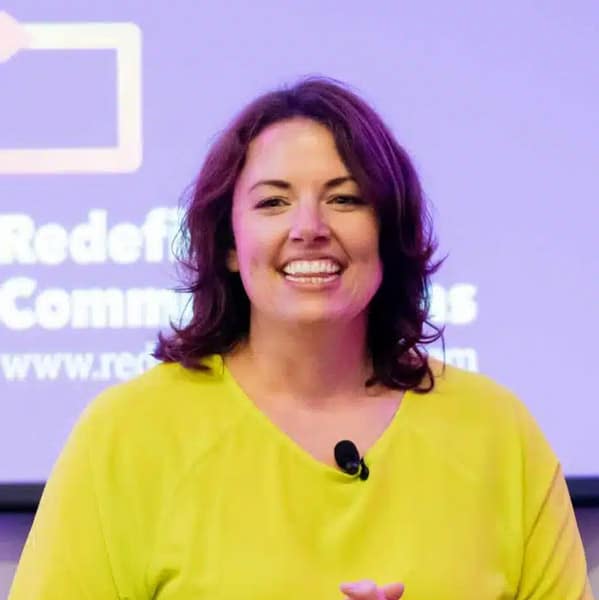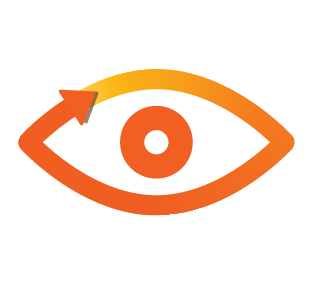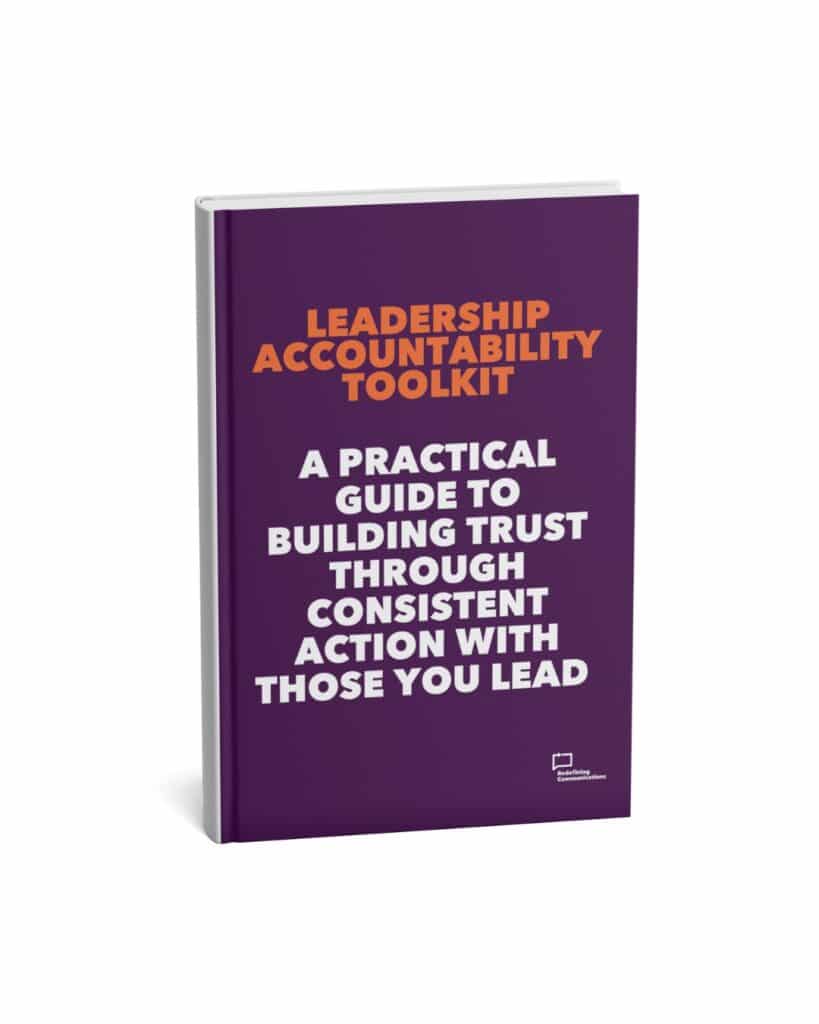The Field Model™ came from a conversation about how I describe what I do. Over the years the need to be mindful, explore other perspectives and manage emotional reactions has led to better conversations and quicker problem solving. When I describe what I do I don’t describe the activities, I describe the fact that I can bring calm to the chaos inside the organisation. The Field Model™ codifies what naturally happens when you start to explore why things are happening.
Often when I’m approached by a potential client it’s because they have a pressing issue. They understand the immediate effect that the issue is having on the business and its employees. And there may even have been previous attempts to solve those issues. However, these attempts are frequently short-term fixes. This is because, without understanding and dealing with the root cause, real change can’t happen.
If we use a medical analogy, we’re just dealing with the symptoms. If I have a headache, I might not be able to focus as well, so my first port of call is to take a painkiller. But if I keep getting headaches, then I need to look at what is causing it – is it tension, am I getting enough sleep, do I need to correct my posture, should I get my eyes tested – or is it a combination of all these factors?
In organisations this presents as a feeling of chaos and, particularly if it’s toxic chaos, it can be damaging. The ‘headache’ could be a stressed workforce, high attrition, misaligned functions after an acquisition, absenteeism, teams not working together well, and so on. A wellbeing campaign or new development programme might make things better for a bit, but soon (normally around two years in fact) old issues start to trickle back in. So, we must understand there is a problem, diagnose why it exists and fix it.
Here’s an overview of the three elements to The Field Model™: Understand – Diagnose – Fix.
Understand
We often understand something is wrong. We might not know why but we know we need to do something. It might be because people are leaving, people are off on stress, there has been significant change in the organisation through growth, M&A, crisis – whatever it is we know something isn’t right. This is the first step – we understand the symptoms. This is the most ambiguous part because we often, incorrectly, wrap up understand and diagnose together. Listening and understanding every facet of the communication will help us explore why there is a need to change.
Diagnose
We must diagnose the cause of the symptoms – the why? There will be reasons for things not being right, and we need to uncover what’s really going on. If you fix the symptoms you won’t be fixing things for the long term. Diagnosing takes time but it starts with listening for patterns in language and feelings. Diagnosis can take many forms; from interviews, surveys, focus groups to one-to-one sessions with leadership. The right way to diagnose depends on your situation, organisation and budget. The conversations we have at this stage needs to be with an open mind, without any pre-conceived ideas of what the solution might be.
Fix
Now we can fix the real issues. This is where you need to be comfortable getting uncomfortable. It will require aspects of vulnerability, bravery, courage and listening to others.
It can take anything from a few months to a few years, but you are fixing the things that are at the root cause of the symptoms. Often, the fix is about refocusing your time and energy into a different place and we work with organisations to provide a clear plan to take forward.
What does fix look like? How can communication cover it all?
Communication is the fundamental component, the golden thread, that runs through everything. It is representative of culture, it is the articulation of the strategy and it’s what we need to function as a group or community. So yes, communication covers it all.
Depending on the issue there are several ways the fix takes place. A task force can be set up, you can opt for ‘on-site fix’ which requires someone outside the organisation being in it for a period of time to move it forward (or turn it upside down for a while).
It’s important to mention that the Model isn’t finite; you don’t work through each stage and then stop. You have to be part of the circle. There might be different reasons for using the Model inside your organisation over time and what it uncovers might lead to the need for further insight. The Field Model™ allows you to structure your thinking, your approach and your timescales to deal with the issues that will allow you to carry on running the organisation. Things don’t have to stop while this is carried out, but things will need to be agile and people will need to be open to the change.
The Field Model™ has been applied inside the communications division of global organisation, Gallagher (around 100 employees), to explore the reality of the culture and communication. We were asked to help diagnose what was going on underneath the surface. The managing director wanted to address the symptoms they were seeing and find out how people really felt about working there, how they found out about what was happening and how aligned everyone was to the strategy. We conducted listening interviews with 26 members of staff in three locations around the world.
“I hired Jenni to come and help us explore what was really going on inside the organisation. We had been through rapid growth and I wanted to explore how we could make sure our people were with us on the journey. She took us through The Field Model and while there were uncomfortable conversations, she always put the team at ease and helped us work through the plan to change. One year later and we have implemented everything. It’s been a journey, but it’s helped us make changes that have real impact.” Ben Reynolds, Managing Director, Gallagher
If you’d like to find out about how The Field Model™ could help bring some calm to the chaos inside your organisation, please get in touch. I describe The Field Model™ in detail in my book, Influential Internal Communication and you can also listen to my podcast episode on The Field Model.









